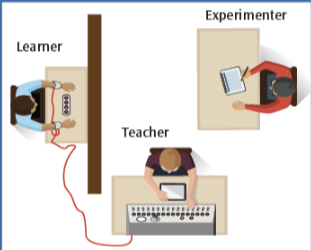Milgram’s obedience study
1/4
There's no tags or description
Looks like no tags are added yet.
Name | Mastery | Learn | Test | Matching | Spaced |
|---|
No study sessions yet.
5 Terms
Explain the key aspects of the procedure of Milgram’s study of obedience
40 US men given role of teacher through fixed draw
Ordered by experimenter to shock learner when they made a mistake in a word recall task
Shocks increased 15V with each mistake up to 450V

Explain the findings of the baseline variation
65% went to the top of the shock scale (450V)
100% went to 300V
Many participants showed signs of stress and objected but continued anyway
Prior survey suggested only 3% would obey
Explain what conclusions can be drawn from the baseline variation of the experiment
People are much more likely to obey than we think
People underestimate the impact of situation on behaviour and overestimate the impact of personality
Identify:
where the location variation took place
obedient %
why obedience changed
run-down office block
Obedience dropped to 47.5%
Business lacked authority of science present at Yale
Identify:
procedure of the proximity variation
Obedience %
Why the obedience changed
teacher and learner in the same room
Obedience dropped to 40%
Teacher could see the learner’s suffering